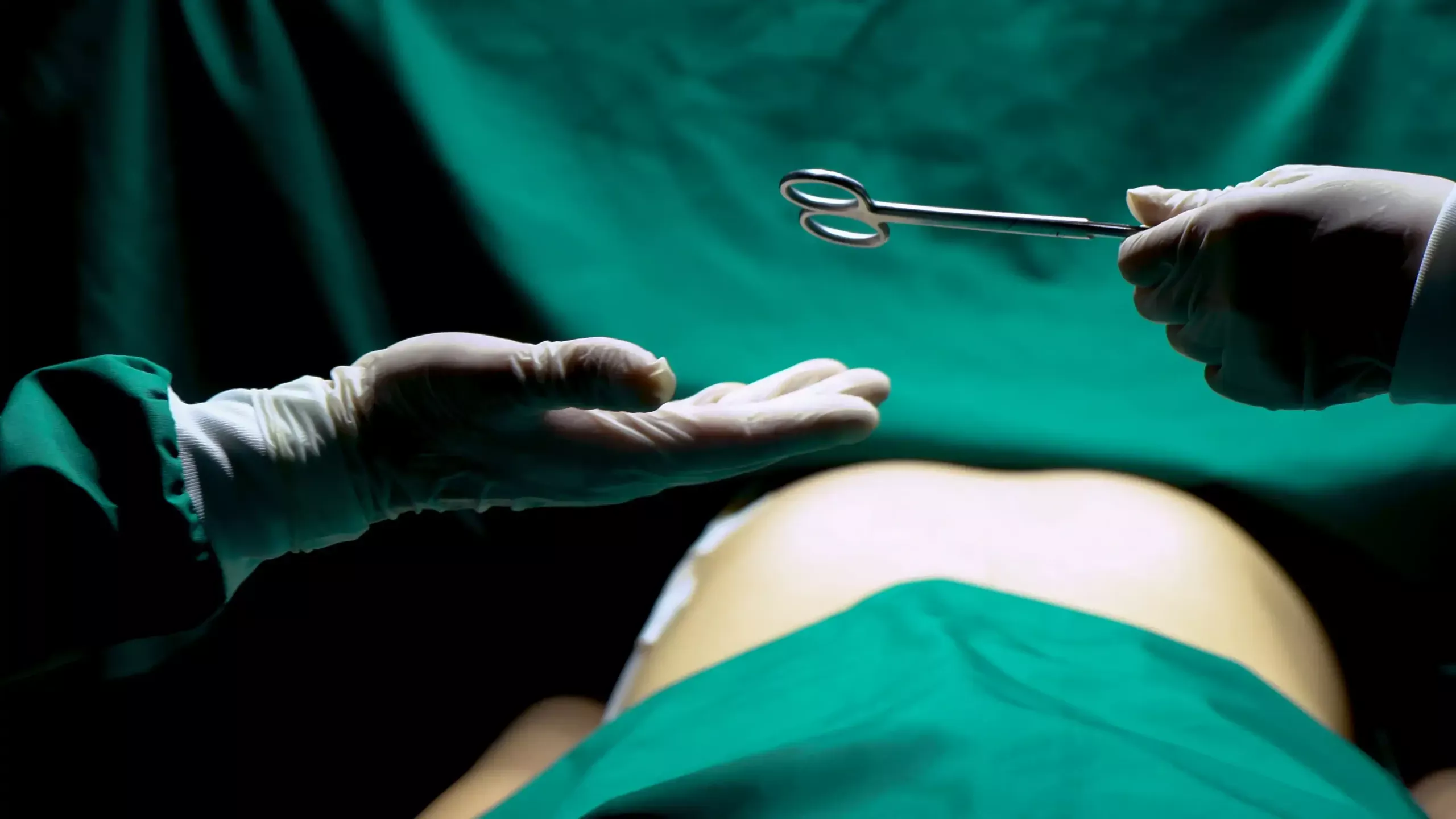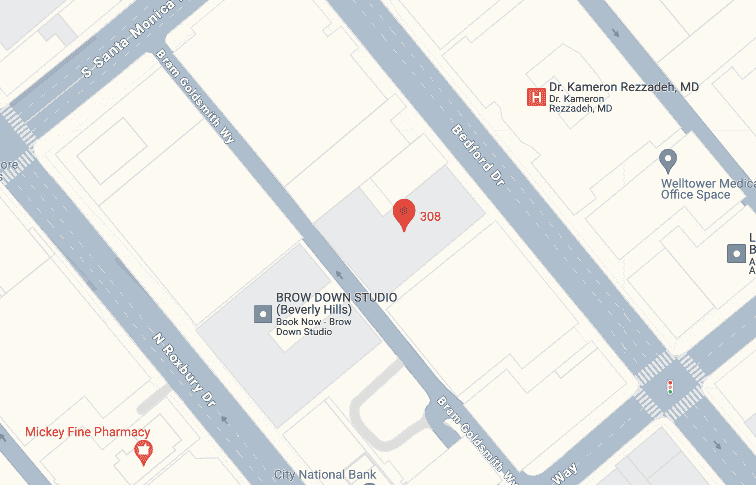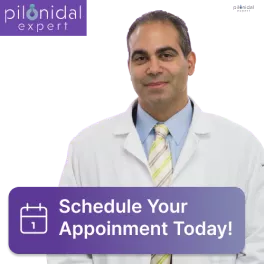A pilonidal cyst is a sac of tissue that forms in high-friction areas of the body but is most typically found in the buttocks region, near the top crease of the coccyx. Nearly 70,000 cases of pilonidal cysts are recorded annually in the United States, and while this condition can affect anyone, it is most common in men ages 20 to 40. While the root cause of the skin condition is not known, researchers find it is closely related to ingrown hairs. Loose hair in the bottom region can irritate or become embedded under the skin due to friction and constant pressure, which causes the body to react defensively by creating a sac around the hair. This sac may become inflamed, and even infected, which is regarded as a pilonidal abscess.
Who is at higher risk of developing pilonidal cysts?
Individuals who are at higher risk of developing a pilonidal cyst are those who sit for prolonged periods of time such as truck drivers, cyclists, and desk job workers; people who are considered overweight or diagnosed as obese, have thick and coarse body hair, and those who wear tight-fitting clothing. Ways to lower the chances of developing pilonidal cysts are practicing good hygiene, such as showering daily, cleaning the affected area with soap and water, changing clothes regularly especially if they are sweaty, removing body hair from the area, and exercising if recommended by your medical provider. These simple, but subtle changes to your daily life are effective ways to combat pilonidal cysts.
What is a pilonidal cyst with abscess?
A pilonidal cyst with an abscess really means a pilonidal cyst that has become infected. Symptoms of an infection can vary case by case, but most commonly refer to a red, inflamed large mass in the buttock region with foul-smelling liquid or pus draining from the area. Experiencing high levels of pain, especially when seated, and feeling nauseous, running a fever, or feeling ill are other, but more serious symptoms of a pilonidal abscess. If you are feeling any symptoms, please contact your medical provider immediately. While pilonidal abscesses are not fatal, the infection may become a full-body infection that can quickly become life-threatening.
Now, how do you prevent pilonidal abscess? A pilonidal abscess essentially is an infected pilonidal cyst. So, how do you prevent infection? In truth, there is only so much you can do — some cysts will not respond even to the best of practices. Nevertheless, some things to do at home would be to practice and maintain great personal hygiene. Seeking medical intervention is possibly the best route in ensuring the cyst does not become infected.
How do you treat a pilonidal abscess?
Depending on the severity of the pilonidal cysts, there are different medical treatments available to treat the affected area. Medical providers take into account the size of the cyst, pain levels, if it is infected or not, and if you have had pilonidal cysts in the past, before deciding which route to take.
More complex treatments for pilonidal cysts include: phenol injection, surgical excisions, and laser ablation.
Conservative: If the pilonidal cyst is diagnosed as mild and caught early on, the medical provider might choose a more conservative approach of doing nothing. Many patients will have their pilondial sinuses become dormant and asymptomatic. If this is the case, treatment is not necessary.
- Phenol injection:
This treatment applies phenol into the cyst, which causes it to eventually harden and close all together; before injecting this chemical compound to the cyst, the medical provider will likely use a local anesthetic. Success rates for phenol injection is estimated at 90%. - Lancing and drainage:
Lancing and draining are procedures used to treat an infected cyst. However, it is key to understand that these treat the infection, not the cyst. A follow up, and more definitive procedure will have to be done for treating the cyst, once the infection is controlled. Like most procedures, the medical provider will start by numbing the area with local anesthetic. They will then create an incision with a scalpel, allowing the abscess to drain itself of the pus and debris trapped inside the sack. - Wide excision and open healing:
A wide excision is an operation used to treat larger or recurrent pilonidal sinus infections. Wide excision treats the skin condition by cutting out the sinus and some of the surrounding skin. The medical provider will then leave the wound to “open heal”; open healing is a phrase used for cuts that are not closed with stitches, instead packed with sterile dressing, allowing the wound to heal from the inside out. This is the most common procedure performed in the United States. Recurrence rates for open wounds is about 15-20%, and typical healing time averages between 2-6 months. - Excision and wound closure:
These are performed under anesthesia. The pilonidal sinus is fully removed, and the wound is closed by the use of a flap. There are various flap techniques, the gold standard considered to be the Rhomboid Rotatinal Flap. Recurrence rates with flap surgeries are the lowest, estimated at about 4-5%. - Laser ablation:
There may be multiple holes within a sinus. A laser probe is placed into the cavity and the sinus is ablated with laser. A few benefits of an laser ablation: it is a less invasive procedure as there is no need for a major excision, it is an outpatient procedure. Success rate for laser is estimated at about 80% (that is, 8 in 10 patients will need no further intervention). - Gips Procedure:
With a Gips procedure, multiple small holes are created along the length of the cyst and the cyst is cleaned out. By creating multiple drainage sites, it allows the cyst to heal better after debridement. Success rates are reported at about 85% with a Gips procedure.
Learn more: Surgery to Remove Pilonidal Cyst
Choose The Right Los Angeles Colorectal Surgeon For You!
Are you experiencing pain from pilonidal cysts or abscesses but cannot find the right surgeon for you? Look no further! Dr. Kamrava is an experienced colorectal surgeon based in Los Angeles. He is dedicated to providing life-changing results for his patients and offers non-invasive surgery with almost no downtime. Board-certified specialist, Dr. Kamrava has access to cutting-edge technology and can help put your mind at ease. Call (424)279-8222 to schedule an appointment today, and get you on track towards alleviating your pain.








